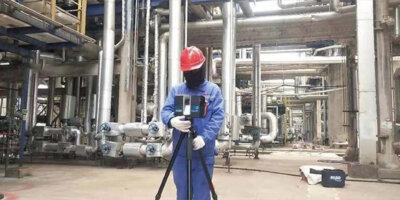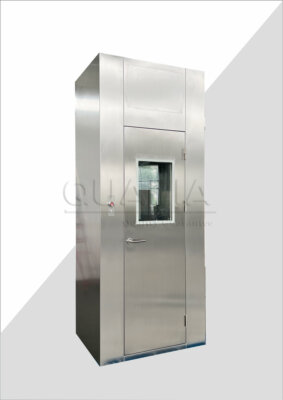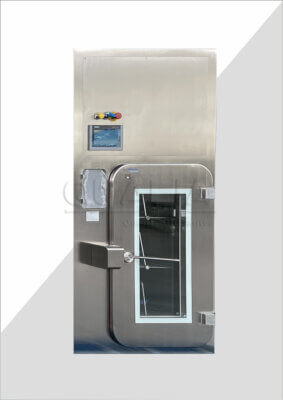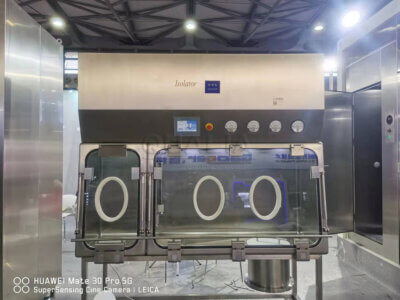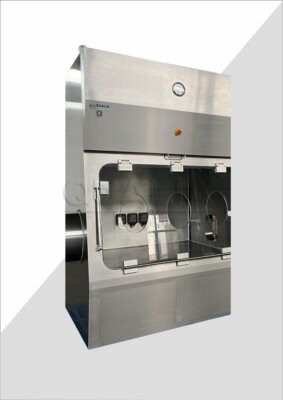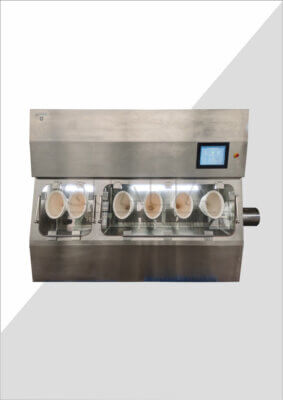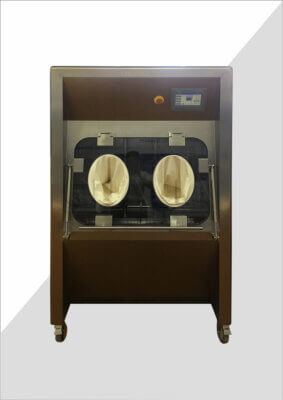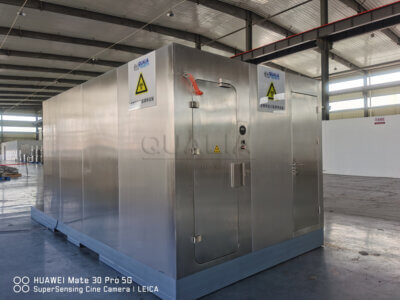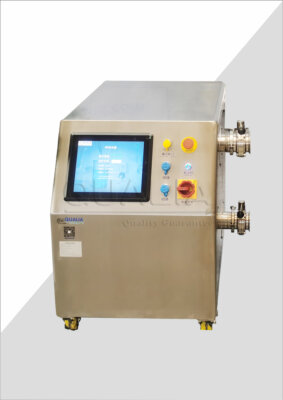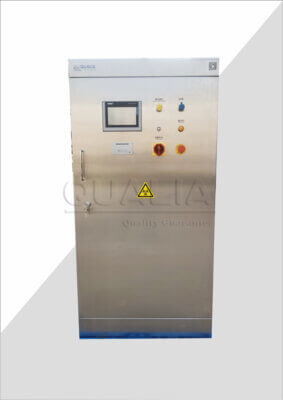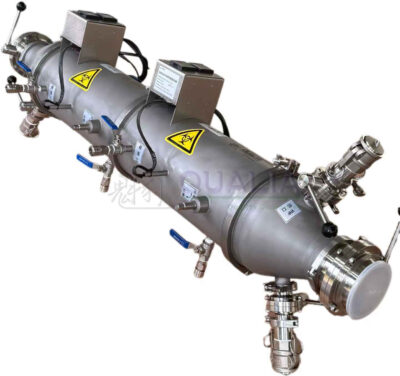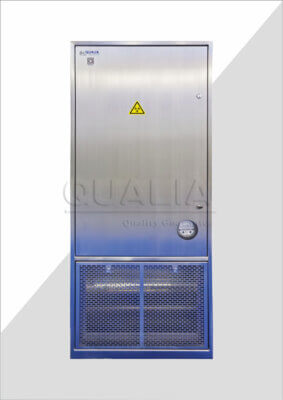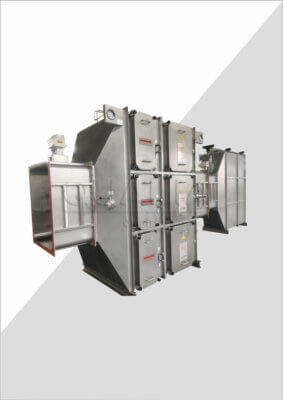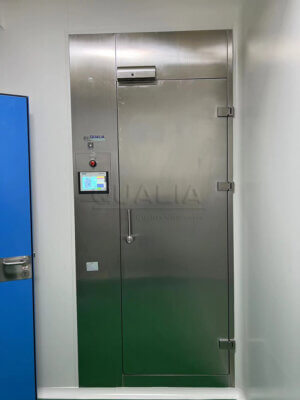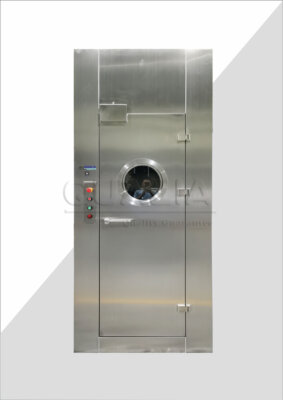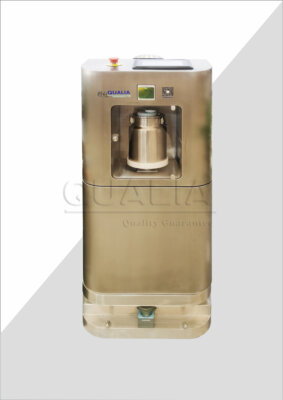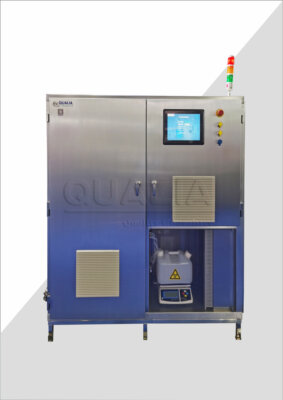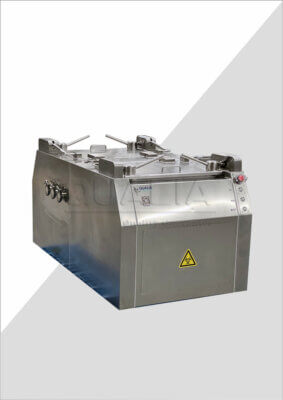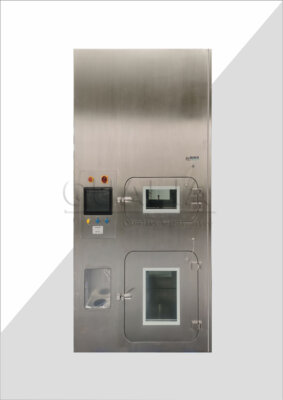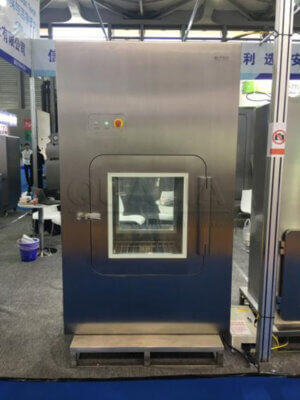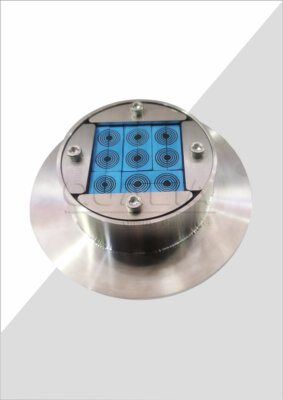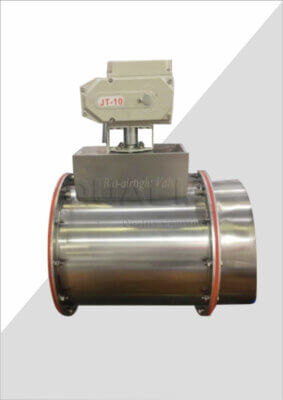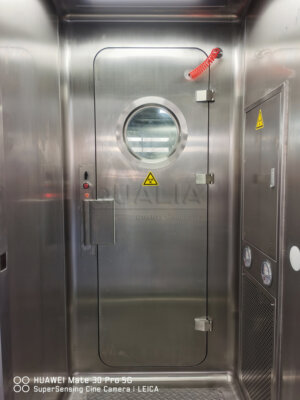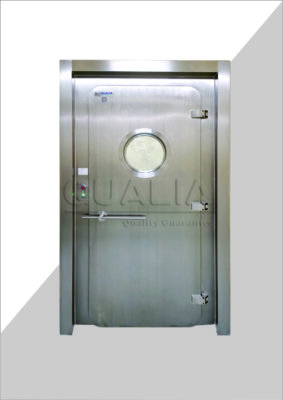Sterility test isolators play a crucial role in ensuring the safety and quality of pharmaceutical products. At the heart of their operation lies the concept of batch processing, a method that allows for efficient and controlled testing of multiple samples simultaneously. This approach not only enhances productivity but also maintains the integrity of the sterile environment, which is paramount in pharmaceutical manufacturing.
The implementation of batch processing in sterility test isolators has revolutionized the way pharmaceutical companies handle quality control. By enabling the testing of multiple samples in a single run, it significantly reduces the time and resources required for sterility testing. This efficiency is particularly important in an industry where time-to-market can make or break a product's success.
As we delve deeper into the world of batch processing in sterility test isolators, we'll explore the various aspects that make this approach so effective. From the technical specifications of isolators to the protocols that govern batch processing, we'll uncover the intricacies of this vital component of pharmaceutical quality control.
Batch processing in sterility test isolators has become the industry standard for efficient and reliable sterility testing in pharmaceutical manufacturing.
What are the key components of a sterility test isolator?
Sterility test isolators are sophisticated pieces of equipment designed to maintain a sterile environment for testing pharmaceutical products. These isolators are comprised of several critical components that work in tandem to ensure the integrity of the testing process.
At the core of a sterility test isolator is the sealed chamber where the actual testing takes place. This chamber is typically made of stainless steel or other non-porous materials that can withstand rigorous cleaning and sterilization procedures. The chamber is equipped with glove ports that allow operators to manipulate samples and equipment without compromising the sterile environment.
Another crucial component is the HEPA filtration system. This system ensures that the air inside the isolator remains free of contaminants, maintaining the sterile conditions necessary for accurate testing. The filtration system works continuously, constantly circulating and cleaning the air within the isolator.
QUALIA's state-of-the-art sterility test isolators incorporate advanced HEPA filtration systems that exceed industry standards, ensuring unparalleled air quality within the testing environment.
| Component | Function |
|---|---|
| Sealed Chamber | Maintains sterile environment |
| Glove Ports | Allow manipulation of samples |
| HEPA Filtration | Ensures air purity |
| Transfer Ports | Facilitate material transfer |
The transfer ports are another essential feature of sterility test isolators. These ports allow for the safe transfer of materials in and out of the isolator without compromising the sterile environment. They typically employ a double-door system to maintain isolation during transfers.
Lastly, the control system is the brain of the isolator. It monitors and regulates various parameters such as air pressure, temperature, and humidity. Advanced isolators may also include integrated data logging and reporting systems to ensure compliance with regulatory requirements.
In conclusion, the key components of a sterility test isolator work in harmony to create and maintain a controlled, sterile environment. This environment is essential for conducting accurate and reliable sterility tests, which are crucial for ensuring the safety of pharmaceutical products.
How does batch processing enhance efficiency in sterility testing?
Batch processing is a game-changer in the realm of sterility testing, significantly boosting efficiency and productivity. This approach allows for the simultaneous testing of multiple samples, maximizing the use of resources and time within the sterility test isolator.
In traditional methods, samples were often tested individually, leading to longer processing times and increased costs. Batch processing, however, allows for the grouping of similar samples or products, which can then be tested concurrently. This not only reduces the overall time required for testing but also optimizes the use of the sterility test isolator.
One of the key advantages of batch processing is the reduction in setup and cleaning time. Instead of preparing the isolator for each individual test, operators can set up once for an entire batch, significantly cutting down on non-productive time.
Implementing batch processing in sterility test isolators can reduce overall testing time by up to 50%, leading to faster product release and improved market responsiveness.
| Aspect | Traditional Method | Batch Processing |
|---|---|---|
| Testing Time | Longer | Shorter |
| Resource Utilization | Lower | Higher |
| Setup Frequency | High | Low |
| Cost-Effectiveness | Lower | Higher |
Moreover, batch processing allows for more efficient use of consumables and reagents. By testing multiple samples simultaneously, the amount of materials used per sample is often reduced, leading to cost savings and less waste.
The batch process also improves the consistency of testing conditions. All samples within a batch are subjected to identical environmental conditions, reducing variability and enhancing the reliability of test results.
In conclusion, batch processing significantly enhances efficiency in sterility testing by optimizing resource utilization, reducing processing times, and improving cost-effectiveness. This approach not only benefits pharmaceutical companies by speeding up their quality control processes but also contributes to faster delivery of safe, high-quality products to the market.
What are the regulatory considerations for batch processing in sterility test isolators?
Regulatory compliance is a critical aspect of pharmaceutical manufacturing, and this extends to the use of batch processing in sterility test isolators. Various regulatory bodies, including the FDA and EMA, have established guidelines that govern the use of these systems to ensure product safety and quality.
One of the primary regulatory considerations is validation. Companies must demonstrate that their batch processing methods in sterility test isolators consistently produce accurate and reliable results. This typically involves extensive documentation of processes, equipment qualification, and method validation studies.
Another key regulatory aspect is the maintenance of aseptic conditions throughout the batch processing procedure. Regulators require stringent environmental monitoring programs to ensure that the sterile environment within the isolator is maintained at all times.
Regulatory bodies require that batch processing in sterility test isolators must be validated to demonstrate a sterility assurance level (SAL) of at least 10^-6, ensuring the highest standards of product safety.
| Regulatory Aspect | Requirement |
|---|---|
| Validation | Documented process validation |
| Environmental Monitoring | Continuous monitoring and recording |
| Personnel Training | Comprehensive and ongoing training |
| Data Integrity | Secure, attributable, legible, contemporaneous, original, and accurate (ALCOA) data |
Data integrity is another crucial regulatory consideration. All data generated during batch processing must be secure, attributable, legible, contemporaneous, original, and accurate (ALCOA). This often necessitates the use of advanced data management systems integrated with the sterility test isolators.
Personnel training is also a key regulatory focus. Operators must be thoroughly trained in aseptic techniques, the operation of the isolator, and the specific batch processing procedures. This training must be ongoing and documented to meet regulatory requirements.
In conclusion, regulatory considerations for batch processing in sterility test isolators are extensive and rigorous. Companies must invest significant resources in validation, environmental monitoring, data management, and personnel training to ensure compliance. While these requirements may seem daunting, they are essential for maintaining the highest standards of product safety and quality in pharmaceutical manufacturing.
How does batch size impact the effectiveness of sterility testing?
The determination of optimal batch size is a critical factor in the effectiveness of sterility testing using isolators. The batch size can significantly impact various aspects of the testing process, including efficiency, accuracy, and resource utilization.
When considering batch size, one must balance the desire for increased throughput with the need to maintain the integrity of the testing process. Larger batch sizes can lead to greater efficiency in terms of time and resource utilization. However, they also increase the risk of cross-contamination and may complicate the investigation process if a contamination event occurs.
Conversely, smaller batch sizes may offer more control and easier troubleshooting but at the cost of reduced throughput and potentially higher operational costs per unit tested.
Studies have shown that a batch size of 10-20 units often provides an optimal balance between efficiency and risk management in sterility testing using isolators.
| Batch Size | Advantages | Disadvantages |
|---|---|---|
| Small (1-5 units) | Better control, easier troubleshooting | Lower efficiency, higher cost per unit |
| Medium (10-20 units) | Good balance of efficiency and control | Moderate risk of cross-contamination |
| Large (>30 units) | High efficiency, lower cost per unit | Higher risk of cross-contamination, complex investigations |
The impact of batch size on sterility testing effectiveness also extends to the statistical validity of the results. Larger batch sizes can provide more statistically significant results, potentially increasing confidence in the overall sterility assurance of the product.
However, it's crucial to note that the appropriate batch size can vary depending on the specific product being tested, the manufacturing process, and the historical data on contamination rates. Companies often need to conduct thorough risk assessments and validation studies to determine the optimal batch size for their specific needs.
In conclusion, the impact of batch size on the effectiveness of sterility testing is multifaceted. While larger batches can offer efficiency gains, they must be balanced against the increased risks and complexity they introduce. The determination of optimal batch size requires careful consideration of various factors and should be based on a thorough understanding of the specific product and manufacturing process.
What role does automation play in batch processing for sterility testing?
Automation has become an increasingly important aspect of batch processing in sterility testing, revolutionizing the way these critical procedures are conducted. By integrating advanced robotics and sophisticated software systems, automation enhances the accuracy, consistency, and efficiency of sterility testing processes.
One of the primary benefits of automation in batch processing is the reduction of human error. Automated systems can perform repetitive tasks with a high degree of precision, minimizing the risk of contamination due to manual handling. This is particularly crucial in maintaining the sterile environment within the isolator.
Automated systems also allow for continuous operation, potentially increasing the throughput of sterility testing. This can be especially beneficial when dealing with large batch sizes or high-volume production environments.
Automated batch processing systems in sterility testing can reduce human error rates by up to 90%, significantly enhancing the reliability of test results.
| Aspect | Manual Process | Automated Process |
|---|---|---|
| Error Rate | Higher | Lower |
| Consistency | Variable | Highly consistent |
| Throughput | Lower | Higher |
| Data Recording | Manual, prone to errors | Automatic, accurate |
Another significant advantage of automation is in data management. Automated systems can record and store data in real-time, providing a complete and accurate audit trail. This not only aids in regulatory compliance but also facilitates trend analysis and process improvement efforts.
Automation also plays a crucial role in environmental monitoring within the isolator. Automated systems can continuously monitor and adjust critical parameters such as air pressure, temperature, and humidity, ensuring optimal conditions for sterility testing.
However, it's important to note that while automation offers numerous benefits, it also requires significant investment in equipment and training. Additionally, automated systems must be thoroughly validated to ensure they consistently perform as intended.
In conclusion, automation plays a pivotal role in enhancing the efficiency, accuracy, and reliability of batch processing in sterility testing. As technology continues to advance, we can expect to see even greater integration of automation in sterility test isolators, further improving the quality and safety of pharmaceutical products.
How are environmental conditions maintained during batch processing in sterility test isolators?
Maintaining precise environmental conditions is crucial for the integrity of batch processing in sterility test isolators. These controlled environments are designed to provide optimal conditions for sterility testing while preventing contamination from external sources.
The primary environmental factors that need to be carefully controlled include air quality, temperature, humidity, and pressure differentials. Each of these parameters plays a vital role in ensuring the accuracy and reliability of sterility tests.
Air quality is maintained through the use of High-Efficiency Particulate Air (HEPA) filtration systems. These systems continuously filter the air within the isolator, removing particles as small as 0.3 microns with an efficiency of 99.97% or higher.
Advanced sterility test isolators can maintain a Class 100 (ISO 5) cleanroom environment, with less than 100 particles (≥0.5 μm) per cubic foot of air.
| Environmental Factor | Control Method | Typical Range |
|---|---|---|
| Air Quality | HEPA filtration | Class 100 (ISO 5) |
| Temperature | Thermostat control | 20-25°C |
| Humidity | Humidity control system | 30-65% RH |
| Pressure | Positive pressure system | 10-15 Pa above ambient |
Temperature control is typically achieved through integrated heating and cooling systems. Maintaining a consistent temperature is crucial not only for the comfort of operators but also for the stability of test samples and media.
Humidity control is another critical factor. Too high humidity can promote microbial growth, while too low humidity can lead to static electricity issues. Most isolators are equipped with humidity control systems that maintain relative humidity within an optimal range.
Pressure differentials are maintained to ensure that air flows from the cleanest areas to less clean areas. This is typically achieved by maintaining a positive pressure within the isolator relative to the surrounding environment, preventing the ingress of potential contaminants.
Modern sterility test isolators often incorporate sophisticated environmental monitoring systems that continuously track these parameters. These systems can provide real-time data and alerts, allowing for immediate corrective action if any parameter deviates from the specified range.
In conclusion, maintaining precise environmental conditions during batch processing in sterility test isolators is a complex but crucial task. It requires a combination of advanced engineering, sophisticated control systems, and rigorous monitoring. By ensuring optimal environmental conditions, these systems play a vital role in maintaining the integrity of sterility testing processes.
What are the challenges in scaling up batch processing for sterility testing?
Scaling up batch processing for sterility testing presents several challenges that pharmaceutical companies must navigate carefully. As production volumes increase, maintaining the same level of accuracy, efficiency, and compliance becomes increasingly complex.
One of the primary challenges in scaling up is maintaining the integrity of the sterile environment. Larger batch sizes mean more frequent material transfers in and out of the isolator, increasing the risk of contamination. This necessitates even more stringent transfer protocols and potentially more advanced isolator designs.
Another significant challenge is the increased complexity of process validation. As batch sizes grow, companies must demonstrate that their sterility testing processes remain effective and consistent across larger sample sizes.
Studies have shown that scaling up batch sizes by 50% can increase the complexity of process validation by up to 200%, requiring significant additional resources and expertise.
| Challenge | Impact | Mitigation Strategy |
|---|---|---|
| Maintaining sterility | Increased contamination risk | Enhanced transfer protocols, advanced isolator design |
| Process validation | Increased complexity | Comprehensive validation studies, statistical analysis |
| Resource management | Higher demand on personnel and equipment | Automation, training programs, capacity planning |
| Data management | Larger volumes of data to process and store | Advanced data management systems, cloud storage |
Resource management becomes more challenging with larger batch sizes. This includes not only the physical resources like testing materials and equipment but also human resources. Larger batches may require longer processing times, potentially necessitating changes in staffing schedules or increased automation.
Data management is another area that becomes more complex with scaling. Larger batch sizes generate more data, which must be accurately recorded, analyzed, and stored. This often requires investment in more advanced data management systems and potentially cloud storage solutions.
Quality control becomes more critical and potentially more challenging with larger batch sizes. A single contamination event in a large batch could have more significant consequences, both in terms of product loss and potential market impact.
Finally, regulatory compliance can become more complex with scaling. Companies must ensure that their scaled-up processes still meet all relevant regulatory requirements, which may necessitate additional documentation and potentially new approvals.
In conclusion, while scaling up batch processing for sterility testing can offer significant benefits in terms of efficiency and throughput, it also presents numerous challenges. Successful scaling requires careful planning, investment in advanced technologies, and a comprehensive understanding of the potential risks and mitigation strategies.
How does batch processing impact the overall quality assurance in pharmaceutical manufacturing?
Batch processing in sterility test isolators plays a pivotal role in the overall quality assurance framework of pharmaceutical manufacturing. Its impact extends far beyond the immediate testing phase, influencing various aspects of the production process and final product quality.
One of the primary ways batch processing impacts quality assurance is through increased testing efficiency. By allowing multiple samples to be tested simultaneously, it enables more comprehensive testing without significantly extending production timelines. This increased testing capacity can lead to more robust quality control measures.
Batch processing also contributes to consistency in testing conditions. All samples within a batch are subjected to identical environmental conditions, reducing variability and enhancing the reliability of test results. This consistency is crucial for maintaining high standards of quality assurance.
Implementing batch processing in sterility testing has been shown to reduce quality-related recalls by up to 30% in pharmaceutical manufacturing.
| Aspect | Impact of Batch Processing |
|---|---|
| Testing Efficiency | Increased sample throughput |
| Result Consistency | Reduced variability in test conditions |
| Data Analysis | More comprehensive trend analysis |
| Resource Utilization | Optimized use of testing resources |
Another significant impact of batch processing on quality assurance is in the realm of data analysis. The larger data sets generated by batch processing enable more comprehensive trend analysis. This can help identify potential quality issues before they become significant problems, allowing for proactive quality management.
Batch processing also optimizes the use of testing resources, including equipment, materials, and personnel. This optimization can lead to more frequent and thorough testing, further enhancing quality assurance measures.
The implementation of batch processing often necessitates the use of more advanced equipment and procedures. This can lead to overall improvements in the sophistication and reliability of quality control processes throughout the manufacturing pipeline.
However, it's important to note that batch processing also introduces some challenges to quality assurance. The larger batch sizes mean that any quality issues could potentially affect a greater number of products. This underscores the importance of robust quality control measures and thorough batch record keeping.
In conclusion, batch processing has a significant and multifaceted impact on quality assurance in pharmaceutical manufacturing. While it offers numerous benefits in terms of efficiency, consistency, and data analysis, it also requires careful management to mitigate potential risks. When implemented effectively, batch processing can substantially enhance the overall quality assurance framework, contributing to safer and more reliable pharmaceutical products.
In conclusion, batch processing in sterility test isolators represents a significant advancement in pharmaceutical quality control. This approach offers numerous benefits, including increased efficiency, improved consistency, and enhanced data analysis capabilities. By allowing for the simultaneous testing of multiple samples, batch processing not only streamlines the sterility testing process but also contributes to more comprehensive quality assurance measures.
However, the implementation of batch processing is not without its challenges. Scaling up batch sizes requires careful consideration of factors such as maintaining sterile conditions, managing increased complexity in process validation, and handling larger volumes of data. Additionally, regulatory compliance remains a critical consideration, with stringent requirements for validation, environmental monitoring, and personnel training.
Despite these challenges, the benefits of batch processing in sterility test isolators are clear. It allows pharmaceutical companies to conduct more thorough testing without significantly extending production timelines, ultimately contributing to the production of safer, higher-quality pharmaceutical products.
As technology continues to advance, we can expect to see further innovations in this field. Increased automation, more sophisticated data management systems, and improved isolator designs are likely to further enhance the efficiency and reliability of batch processing in sterility testing.
Ultimately, the goal of all these advancements is to ensure the safety and efficacy of pharmaceutical products. By enabling more comprehensive and efficient testing, batch processing in sterility test isolators plays a crucial role in achieving this goal, benefiting both pharmaceutical companies and, most importantly, patients.
External Resources
Continuous vs. Batch Process: What Are the Differences? – This article explains the differences between batch and continuous processes, providing examples such as baking cookies (batch process) and chemical manufacturing (continuous process).
An Introduction to Batch Processing – This resource from Splunk details the flow of batch processing, including data collection, processing in sequences, and the advantages of minimizing system idle times and maximizing system utilization.
What is batch processing? Definition and uses – This article from Adobe defines batch processing, its history, and its advantages. It covers how batch processing automates tasks like payroll, end-of-month reconciliation, and billing.
Exploring Batch Processing: Definition, Use Cases, and Benefits – This page from Spotfire explains batch processing with examples such as credit card billing and payroll processing. It also discusses various use cases and benefits of batch processing.
Batch Processes: Definition, Types, and Advantages – This Indeed article defines batch processes, discusses the types of batch processing, and outlines the advantages and limitations for businesses, particularly in industries like health, finance, and technology.
Batch Processing – The Wikipedia article on batch processing provides a comprehensive overview, including its history, applications, and how it differs from other processing methods like real-time processing.
Batch Processing in Manufacturing – This IndustryWeek article focuses on batch processing in the manufacturing sector, discussing its applications, benefits, and how it compares to continuous processing.
Batch Processing: A Guide to Automating Repetitive Tasks – Red Hat's guide to batch processing explains how to automate repetitive tasks, the benefits of batch processing, and how it can be integrated into various business operations.
Related Contents:
- Sterility Test Isolators for Batch Release: Guide
- Sterility Test Isolators for Pharmaceutical Products
- Sterility Test Isolators in QC: Enhancing Operations
- Controlled Environments in Sterility Test Isolators
- Sterility Test Isolators: Optimizing Testing Chambers
- Sterility Test Isolators: Setting Industry Benchmarks
- Continuous vs. Batch Processing: Optimizing EDS Operations
- Traceability in Sterility Test Isolators: Best Practices
- Microbiological Control: Sterility Test Isolators


